Know Your Character Actor – Marjorie Main
Leave a commentFebruary 24, 2016 by smumcounty
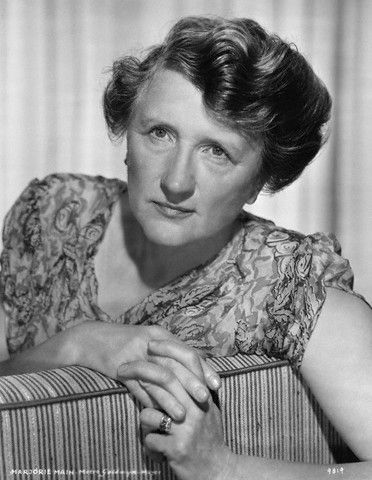 Marjorie Main was born Mary Tomlinson on February 24th, 1890 in Acton Indiana. Marjorie caught the acting bug at an early age. She attended Franklin College in Franklin, Indiana for a year but then convinced her father to allow her to attend the Hamilton School of Dramatic Expression in Lexington, Kentucky, despite the fact that her father, a minister in the Church of Christ, disapproved of acting. Upon graduation, she taught drama for a year but eventually went on to play in vaudeville, touring the Chautauqua and Orpheum circuits. It was at this time that she adopted the stage name of Marjorie Main in order to avoid embarrassing her father. She chose the name because she thought it would be easy to remember.
Marjorie Main was born Mary Tomlinson on February 24th, 1890 in Acton Indiana. Marjorie caught the acting bug at an early age. She attended Franklin College in Franklin, Indiana for a year but then convinced her father to allow her to attend the Hamilton School of Dramatic Expression in Lexington, Kentucky, despite the fact that her father, a minister in the Church of Christ, disapproved of acting. Upon graduation, she taught drama for a year but eventually went on to play in vaudeville, touring the Chautauqua and Orpheum circuits. It was at this time that she adopted the stage name of Marjorie Main in order to avoid embarrassing her father. She chose the name because she thought it would be easy to remember.
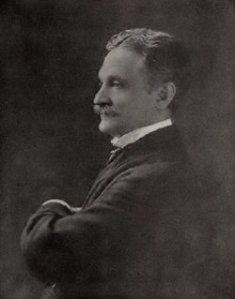
Dr. Stanley Krebs
In 1921, she married Dr. Stanley Krebs, a lecturer and psychologist who was 25 years her senior. At this time she largely gave up performing, traveling with her husband as he gave lectures around the country. At the end of one of his lecture tours, they would return to New York and Main was often able to find theater work there during these hiatuses. In the late 20’s, Dr. Krebs retired from the lecture circuit and the couple settled in New York permanently, allowing Main to return to the stage full time. She was able to find work on Broadway at this time, even appearing as Mae West’s mother in “Wicked”, despite Marjorie being only three years older than West. This was the time when Marjorie first started appearing in small film roles. Her first film role was in “A House Divided” in 1931 starring Walter Huston.
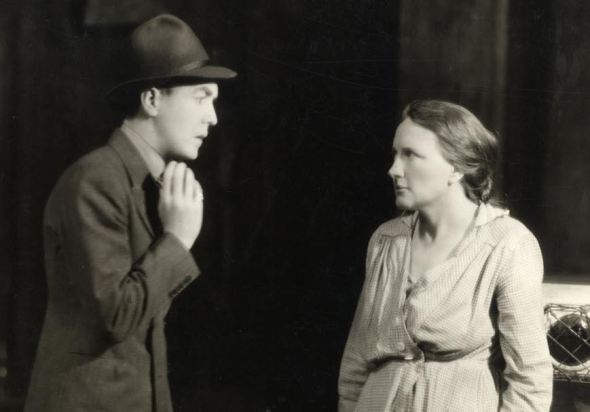
“Dead End” on Broadway in 1935
When Dr. Krebs passed away in 1935, Marjorie threw herself into her work. It was also at this time that she had her first big break on Broadway playing the slattern mother of gangster Baby Face Martin in Sidney Kingsley’s “Dead End” which premiered in October 1935. It was only a small part but she achieved widespread recognition and it established her as an actress on Broadway. The following year she had another great success when she appeared in Claire Booth’s “The Women”, playing the proprietor of a dude ranch in Nevada where women spend time waiting for their Nevada divorces to come through.
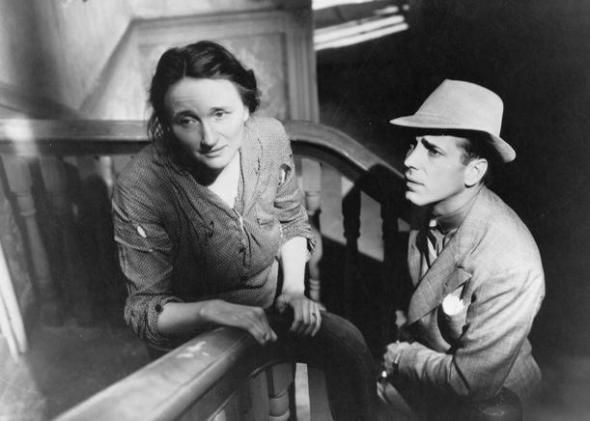
Marjorie with Humphrey Bogart in the film version of “Dead End” (1937)
When Samuel Goldwyn made a film version of “Dead End” in 1937, he engaged Marjorie to recreate her stage performance. Samuel Goldwyn then cast her in a similar role as the mother of Barbara Stanwyck in “Stella Dallas” (1937). These films brought Marjorie to the attention of Hollywood and resulted in other small roles for a number of studios where she was often typecast as slovenly mothers with occasional lighter fare such as the role of the landlady in “Test Pilot” (1938) starring Clark Gable, Spencer Tracy, and Myrna Loy. Marjorie then recreated her stage role in “The Women” for the film version by MGM in 1939. MGM liked what they saw and chose to team her with Wallace Beery for a series of comedies, attempting to repeat the success they had had teaming Beery with Marie Dressler before her death in 1934. The first result of this teaming was “Wyoming” (1940) in which she was cast as a blacksmith named Mehitabel. The results so impressed the MGM executives that they signed her to a long term exclusive contract in 1940. Columnist Damon Runyan was especially impressed by Marjorie’s performance in “Wyoming”, writing, “they have been looking for a successor to the Late Marie Dressler in the cinema capital for some time and Marjorie Main is perhaps the answer.” Of her appearance he wrote, “she has a dead pan, square shoulders, a stocky build, a voice like a file, and an uncurried aspect.” As a character actress this was the sort of role Marjorie would inhabit time and again, a strong, assertive, sometimes abrasive woman, often a countrified hick, who takes no guff from anyone.
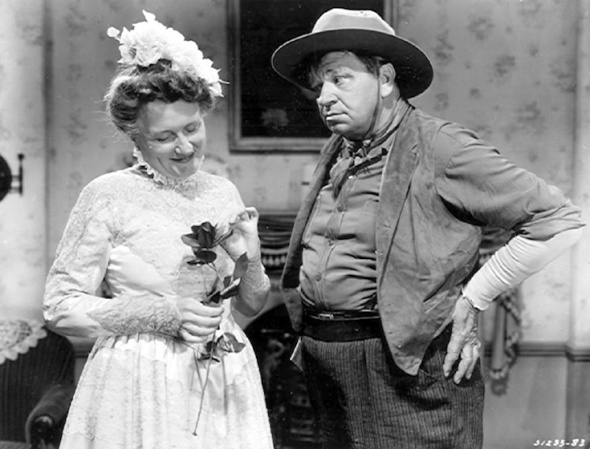
Marjorie and Wallace Beery in “Jackass Mail” (1942)
Marjorie went on to make a total of seven films with Beery. The last for the duo was also his last film, 1949’s “The Big Jack”. Berry was ill during the filming and died a few months after the production had wrapped. Besides appearing in leading roles in B films like those with Beery, she also appeared in small parts in A films during the 40’s. She was cast as a cook in the MGM musicals “Meet Me in St. Louis” (1944) and “The Harvey Girls” (1945) both starring Judy Garland. She played Mrs. Strabel, the wife of a Kansas beef baron in Ernst Lubitsch’s “Heaven Can Wait” (1943) starring Don Ameche and Gene Tierney. But the role that she will best be remembered for is that of a hillbilly mother with fifteen children married to a slow talking, lazy man, Ma Kettle.

Percy Kilbride, Marjorie, and Claudette Colbert in “The Egg and I” (1947)
Marjorie first appeared as Ma Kettle in “The Egg and I” (1947) starring Claudette Colbert and Fred MacMurray. The film tells of the experiences of a young couple running an egg farm and their wacky neighbors which include Marjorie as Ma Kettle and Percy Kilbride as Pa Kettle. The film was a huge success being the biggest box office hit for Universal up to that point and Marjorie garnered an Academy Award nomination for Best Supporting Actress. The studio noticed the positive audience response to the Kettles and came up with the bright idea of creating a series of B films based on the Ma and Pa Kettle characters. The first film, “Ma and Pa Kettle”, appeared in 1949. The film cost $250,000 and grossed nearly two million at the box office. The studio was convinced they had a money maker on their hands and proceeded to produce more films of the series. A total of nine Ma and Pa Kettle films were produced from 1949 to 1957 although the last two were made without Percy Kilbride as Pa Kettle. Marjorie at first didn’t want to make the films but she was still under contract to MGM who was loaning her out to Universal so she had no choice. In time she came to enjoy making the films, taking an interest in the scripts and vetoing anything she found suggestive. In one case, she refused to play a scene in which Ma Kettle is portrayed as inebriated.
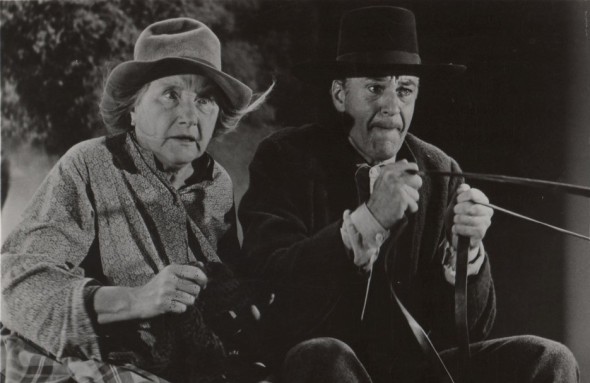
Marjorie and Gary Cooper in “Friendly Persuasion” (1956)
Marjorie’s contract with MGM expired in 1954. Her last two films for the studio were “The Long, Long Trailer”, a comedy starring Lucille Ball and Desi Arnaz, and “Rose Marie”, a musical starring Ann Blyth and Howard Keel. After the end of her contract, Marjorie made a decision to work less, making only a handful of films after that. In 1956 she played the role of Widow Haspeth in “Friendly Persuasion” starring Gary Cooper, a performance that was well received, earning her a Golden Globe nomination for Best Supporting Actress. Marjorie’s last film appearance was in the last of the Ma and Pa Kettle films, “The Kettles on Old McDonald’s Farm” in 1957.
Marjorie finished her career with a handful of television appearances in the 50’s and 60’s. In 1956 she appeared as herself on the CBS sitcom “December Bride” which starred her good friend Spring Byington. The episode was aptly titled “The Marjorie Main Show”. Her last acting job came in 1958, when she appeared twice on NBC’s “Wagon Train” as frontierswoman Cassie Tanner who was romantically paired with Ward Bond’s character, Major Adams. In her later years, Marjorie led a retiring life, occasionally giving interviews and making public appearances such as riding in the annual Hollywood Christmas parade. In 1974, she attended the world premiere of “That’s Entertainment”, a film which celebrates the films of MGM on its 50th anniversary. One of the largest rounds of applause as the stars were introduced at this event went to 84 year old Marjorie who was brought to tears by the warm reception. Marjorie Main died of lung cancer the following year in Los Angeles on April 10th, 1975.
